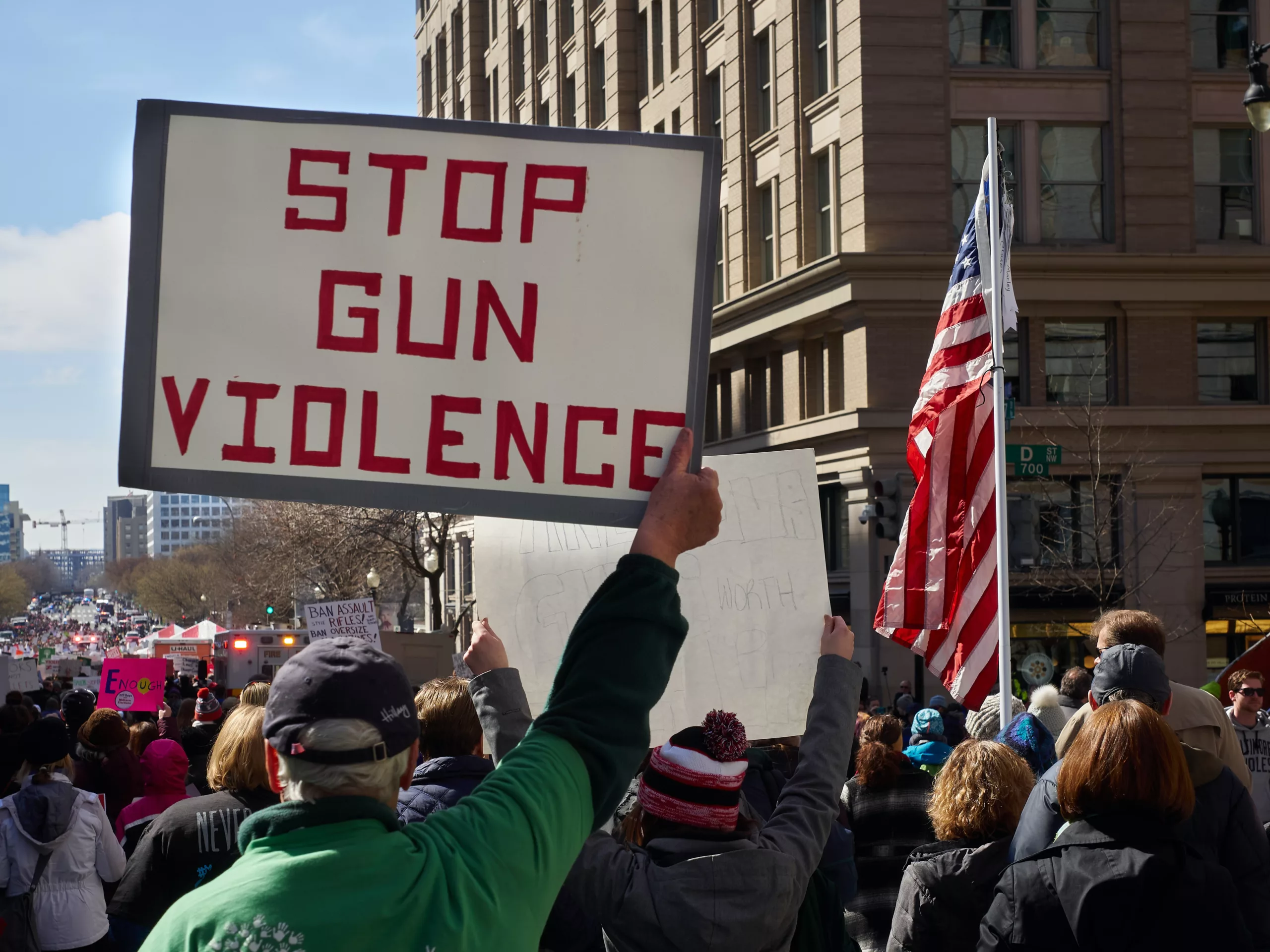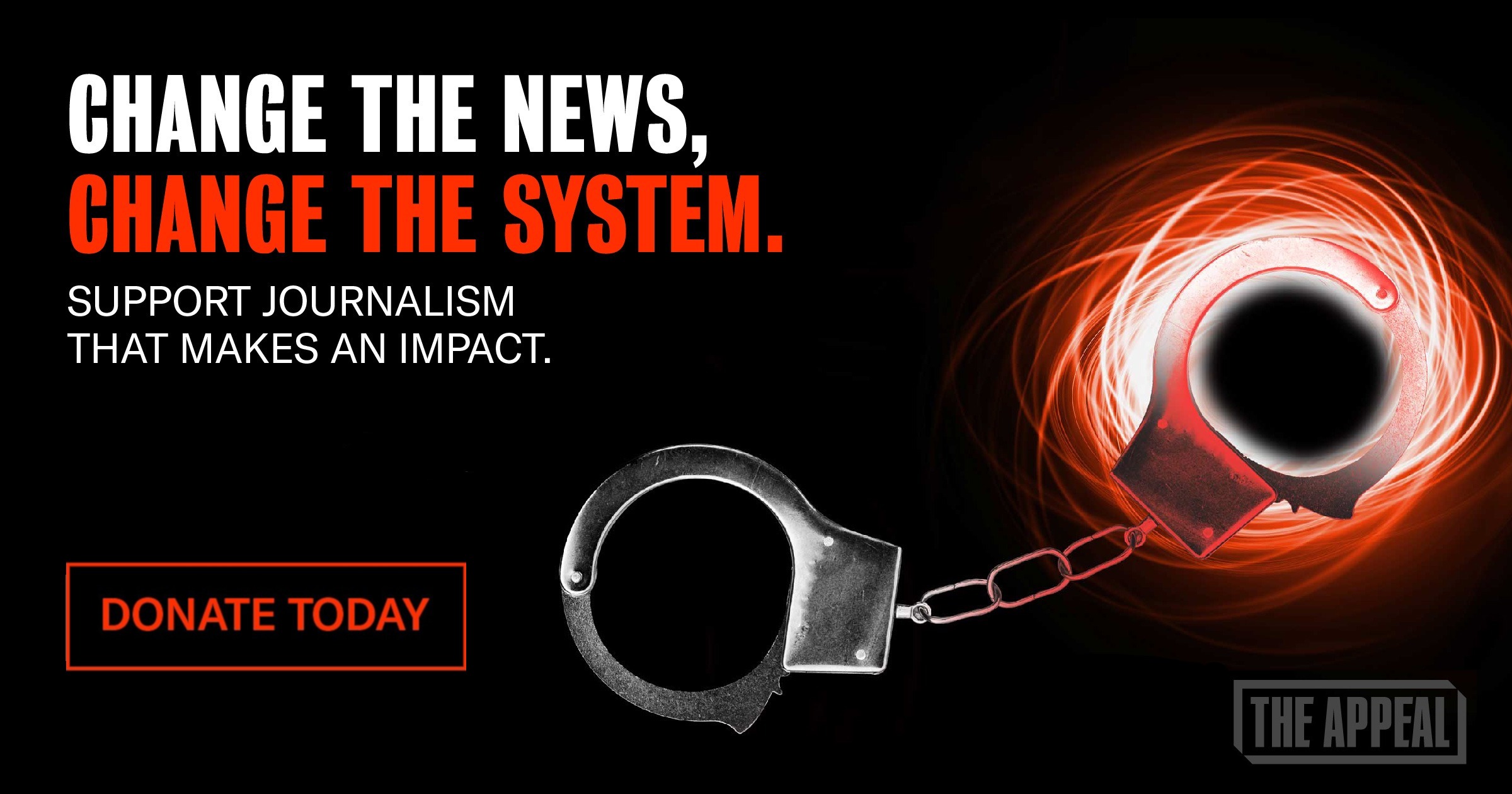Newsletter
Breaking the False Victim-Perpetrator Binary on Gun Violence
We cannot punish our way out of gun violence. Instead, we must invest in dismantling the structures that allow this violence to thrive.

In the cold winter months of November 2019, I sat with nine other incarcerated men and two outside facilitators in a ring of chairs inside the Monroe Correctional Complex in Washington State. We were participating in an 18-month-long transformative justice group focused on addressing past trauma and learning to take responsibility for the harm we had caused. All of us were serving long prison sentences for serious violent crimes—I am serving a 45-year sentence for murder. But I would soon learn that this wasn’t the only tragic bond we shared.
As we discussed our painful childhoods, the facilitators worked to show us that we, too, were victims. The point was not to excuse our past actions but to remind us that we would need to heal to fulfill our potential. First, we had to understand the structures and circumstances that had preceded our crimes. Most of us grew up in rough neighborhoods, fighting long odds against systemic poverty and disadvantage. Many faced physical, sexual, and emotional abuse, which ostracized us further from society and planted the seeds for our own violent behavior.
“How many in this group have been shot by a gun?” I asked the group. I watched as hands slowly rose into the air—eight out of ten participants—including mine. I paused and let the realization sink in. “I don’t believe there is another place in America, aside from another prison, where you could get this same result,” I said.
The men in that room were the products of growing up in a warzone. They were raised in homes with thick Plexiglass windows designed to stop bullets, attending schools with metal detectors blocking the entrances and police roaming the hallways. These are communities where it’s not uncommon for kids to experience some form of gun violence while they are still in elementary school.
Although robust data on broader gun violence trends remains stunted due to decades of federal restrictions on research, we do know that this bloodshed tends to be highly concentrated and cyclical. Perpetrators of gun violence are often victims themselves. One reason this problem continues to ravage our communities is because we refuse to see individuals who commit gun violence as victims who may also need healing. Viewing the world through this false victim-perpetrator binary provides cover for “easy” and ineffective solutions. When a shooter is caught, we place them in the hands of the carceral system, hoping that an arbitrary number of years in prison will somehow fix the problem—while doing nothing to address the circumstances that led people to commit violence in the first place.
On my own journey of personal growth, I have spent a lot of time reflecting on how any of us got to a place where it became acceptable to solve our problems with guns and violence. I have reflected on the role of deeply rooted toxic masculinity, which, from a young age, instilled in me that being a man meant projecting toughness when challenged or confronted. When you’re living in the crossfire, there is nothing more dangerous than being seen as weak.
How, then, do we break this pattern? How do we, as a society, prevent the next generation from growing up in the same violent crucible that brought me and seven other perpetrator-victims to this transformative justice group?
Currently, the courts rely on the carceral system to respond to these issues. In many states, using a gun in any crime is punishable with weapons “enhancements,” typically meaning many more years in prison on top of the underlying sentence. The justification for these extreme punishments is that they will somehow deter gun violence. But the evidence does not bear this out, and the reason is simple. When people are fighting to survive in dangerous environments, they do not have the luxury of carefully considering how many years it could mean in prison—and whether they are prepared to do the time. They are just trying to make it through another day.
We cannot punish our way out of gun violence. We have tried, and it has failed. Instead, we must invest in dismantling the structures that allow this violence to thrive in so many communities. Programs like the one I participated in while incarcerated show the value of “transformers”—people who can help us see the harm we are causing, acknowledge the trauma we’ve endured, and fight to rebuild the confidence we never had. Some cities have already begun to move toward this approach, with investments in community-based gun violence prevention organizations that engage directly with the individuals most likely to be victims or perpetrators of shootings.
People must be able to access these resources before they get caught up in the system. Through accountability and understanding, we can begin to think critically about the irreversible harm we may be causing to our communities. But if we want these individuals to begin healthily participating in society, we must make them feel like they belong. The carceral system is not the answer, and the more reliant we become on it, the further we get from reducing violence.

ICYMI—From The Appeal
In response to reports of systemic abuse, neglect, and secrecy inside New York prisons, two state lawmakers have introduced a bill to establish an independent corrections ombudsman. New York State Senator Julia Salazar and New York State Assembly Member Danny O’Donnell make the case for their proposal.
More than 70 million people in the U.S. have criminal convictions on their records, which can impede their ability to obtain an education, parent their children, find housing, or secure employment. We spoke with Ingrid Archie from TimeDone about how people can get rid of their convictions and the barriers those records create.
Children transferred out of a controversial unit at Louisiana’s Angola state prison last month are facing further mistreatment at the jail they were moved to, according to accounts from two boys detained there. One boy detained at Louisiana’s Jackson Parish Correctional Center said children were maced and then forced to sit outside for hours.
In the News
Prosecutors in Idaho brought abortion trafficking charges for the first time since the state made it illegal to transport minors to another state to get an abortion. Jessica Valenti reports the law enforcement used geolocation data to place a teenager at an Oregon abortion clinic. [Jessica Valenti / Substack]
A California prison guard confessed to sexual misconduct. He got a year of paid time off. His victim was sent to solitary. An investigation by Sam Levin found that guards rarely face consequences for abuse, even when there’s substantial evidence. [Sam Levin / The Guardian]
Bettersten Wade’s search for her son ended when she discovered that a police officer had run him over—and without telling her, authorities buried her child in a pauper’s field. [Jon Schuppe / NBC News]
Police arrested a reporter and publisher in Alabama on charges of disclosing leaked information after they published a story about the local Board of Education’s alleged mishandling of COVID relief funds. [Committee to Protect Journalists]
Appeal Contributing Editor Christopher Blackwell and environmental journalist Sarah Sax investigated the impact of climate change on prisons in Washington state. They found that antiquated infrastructure left the state’s prisons unprepared for an era of extreme weather, with many facilities plagued by sweltering heat, uncontrollable mold infestations, and crumbling plumbing systems. [Christopher Blackwell and Sarah Sax / Type Investigations and High Country News]
